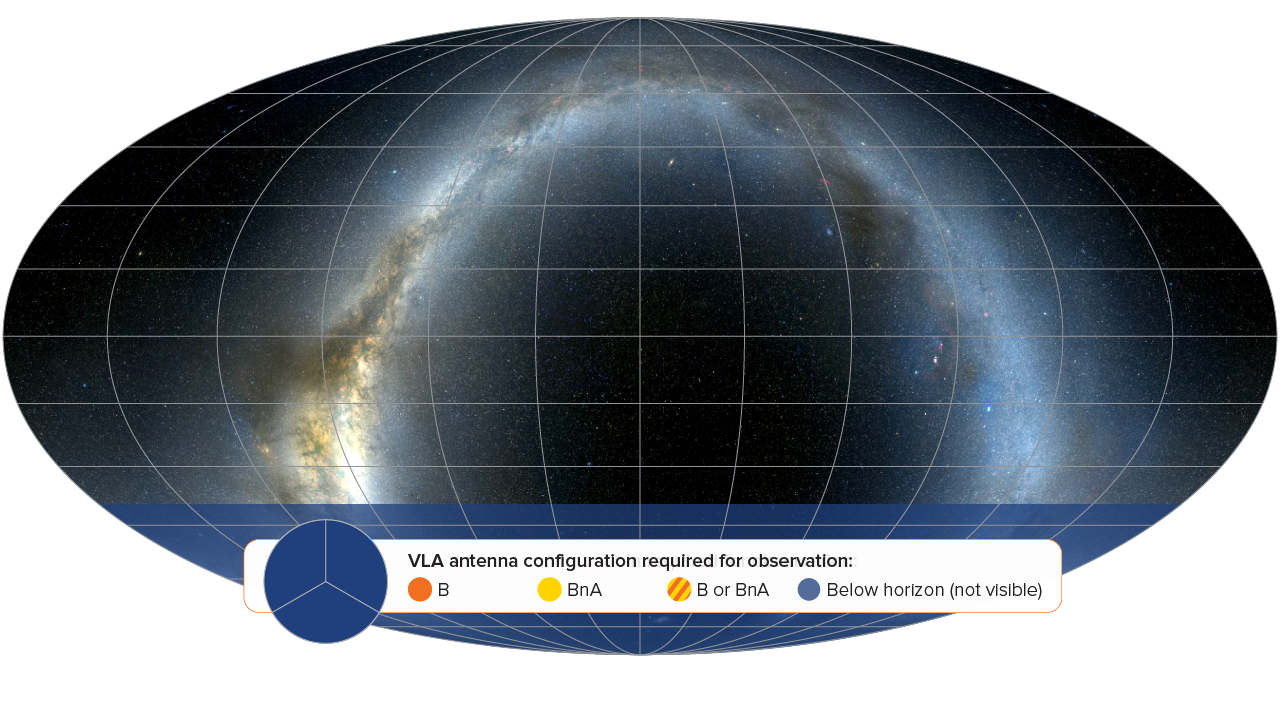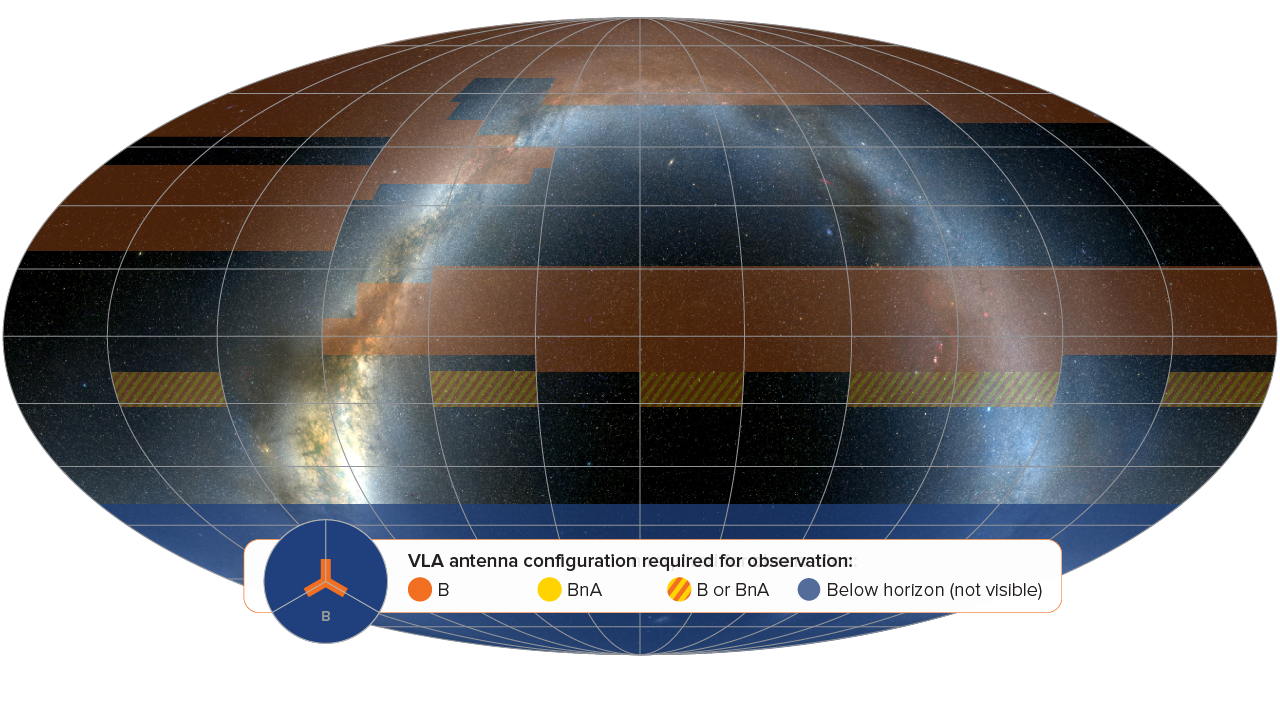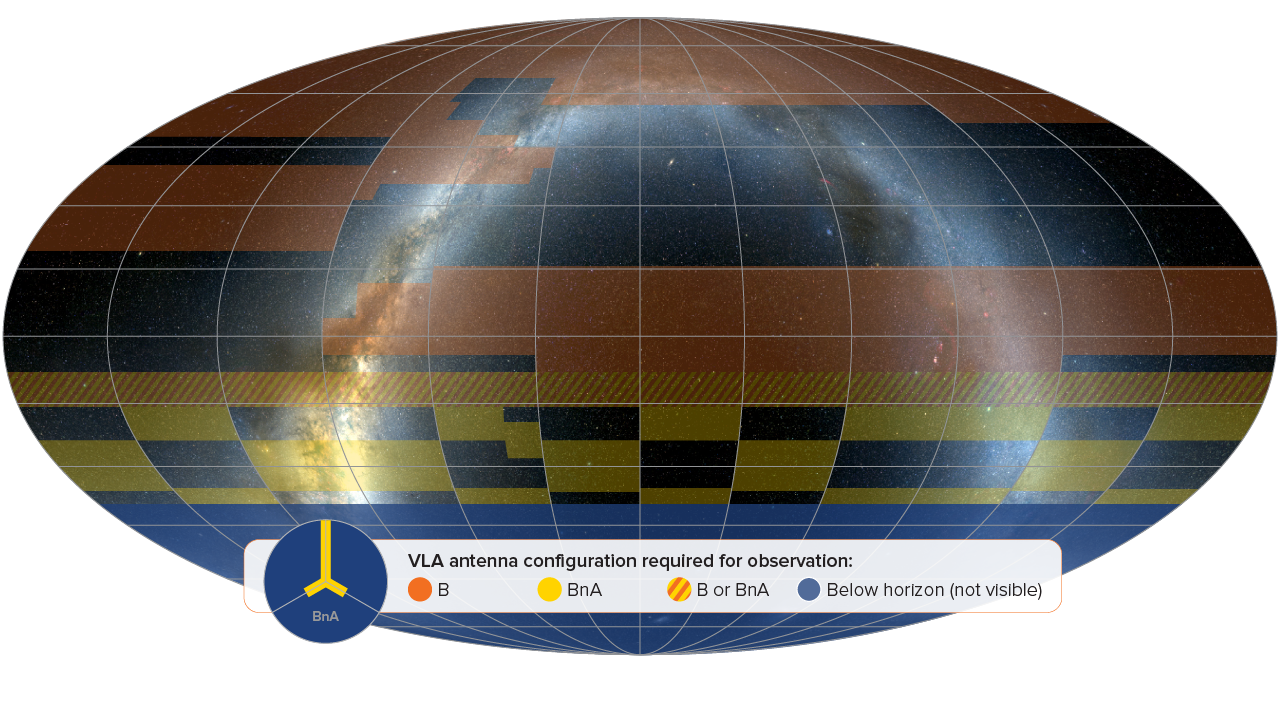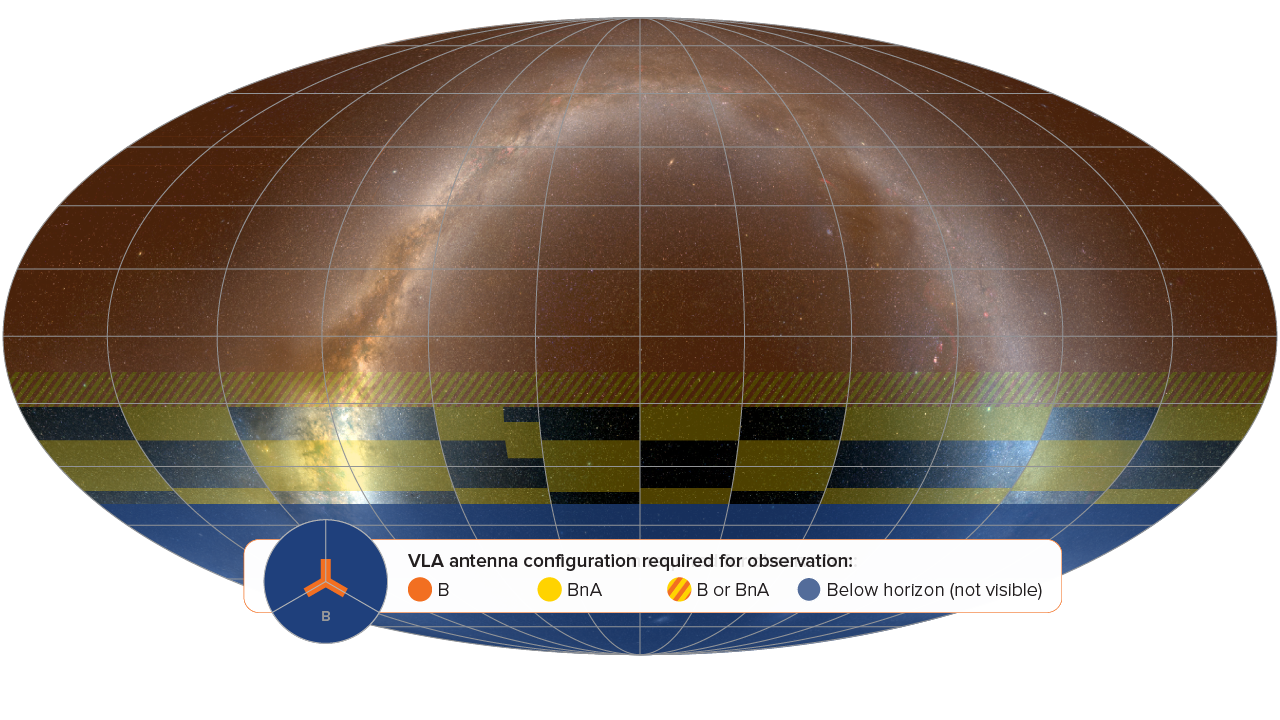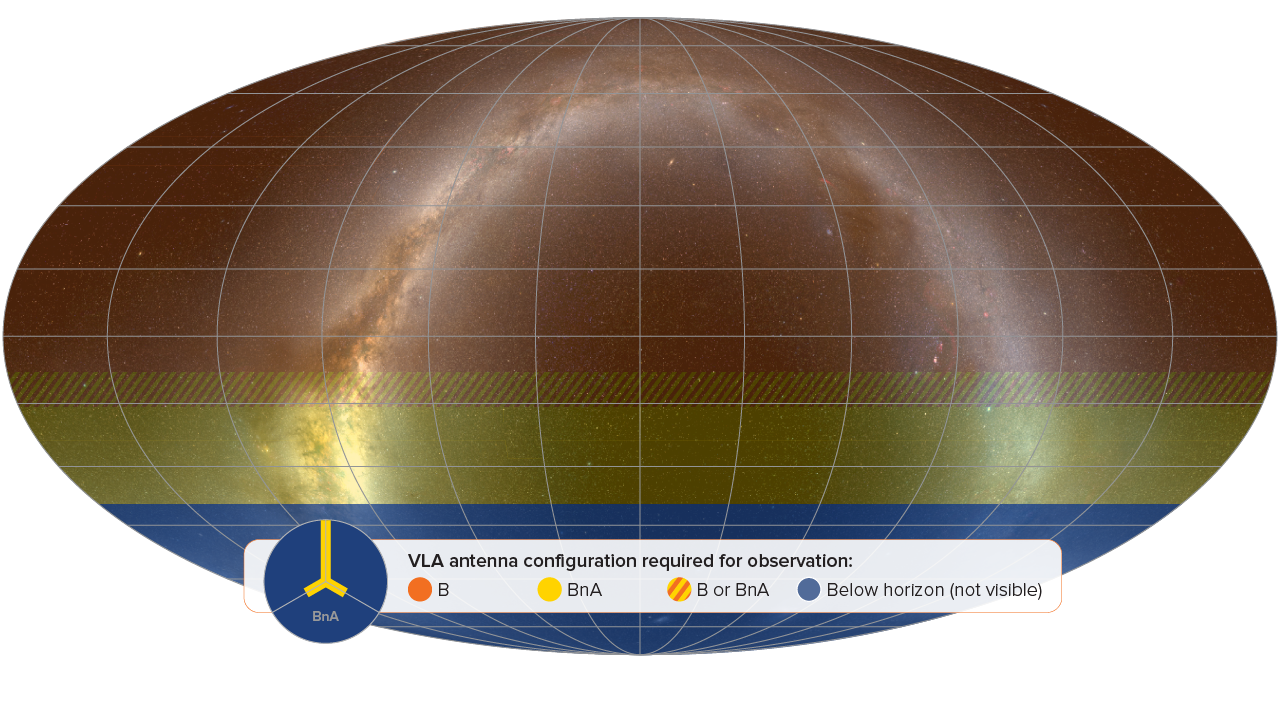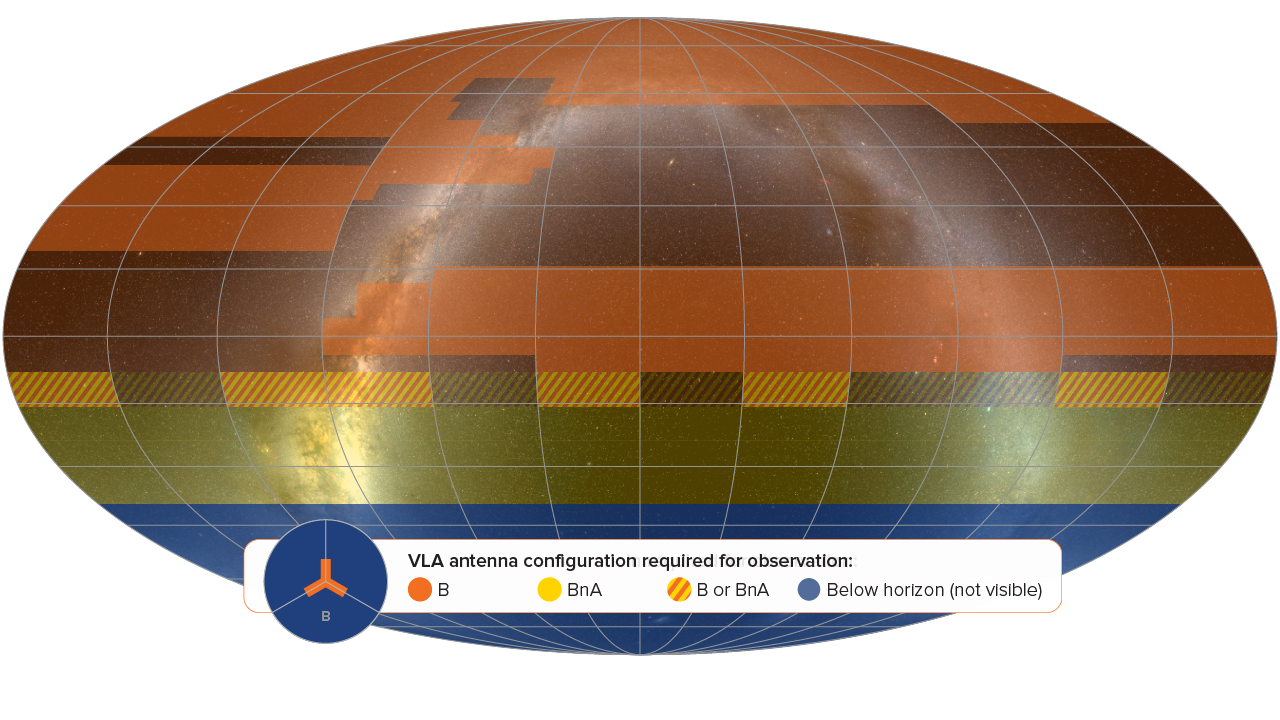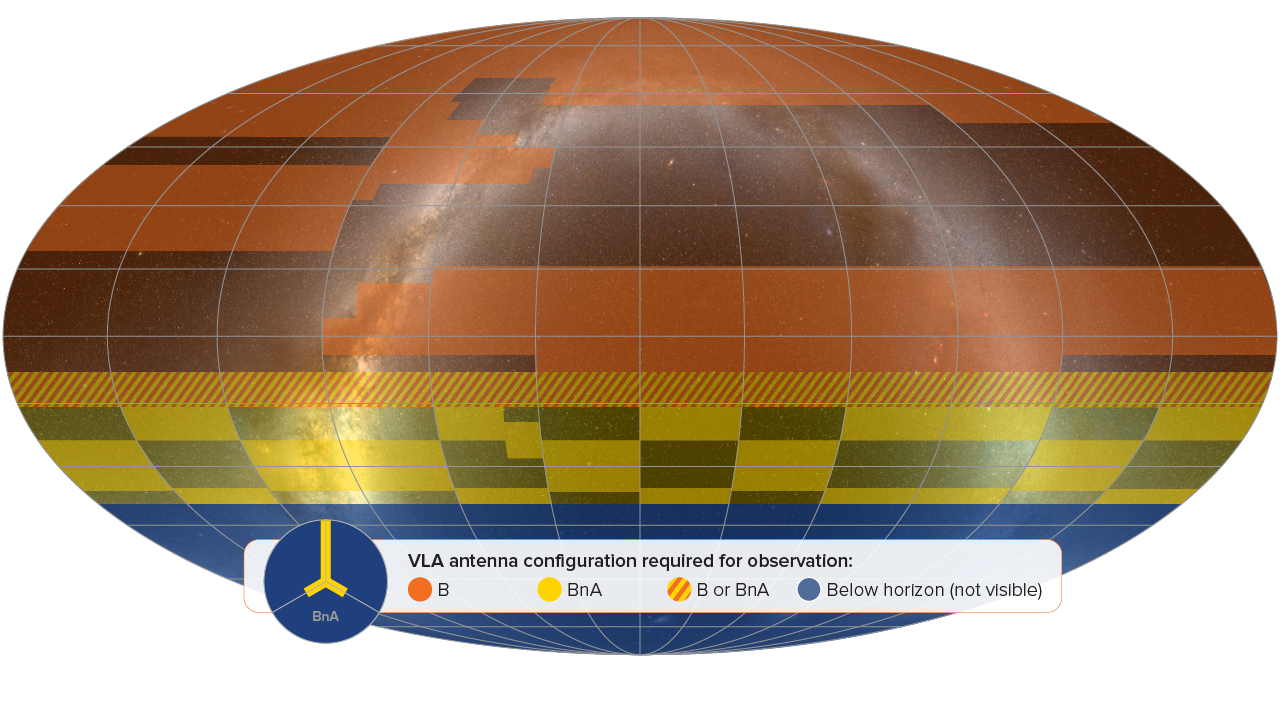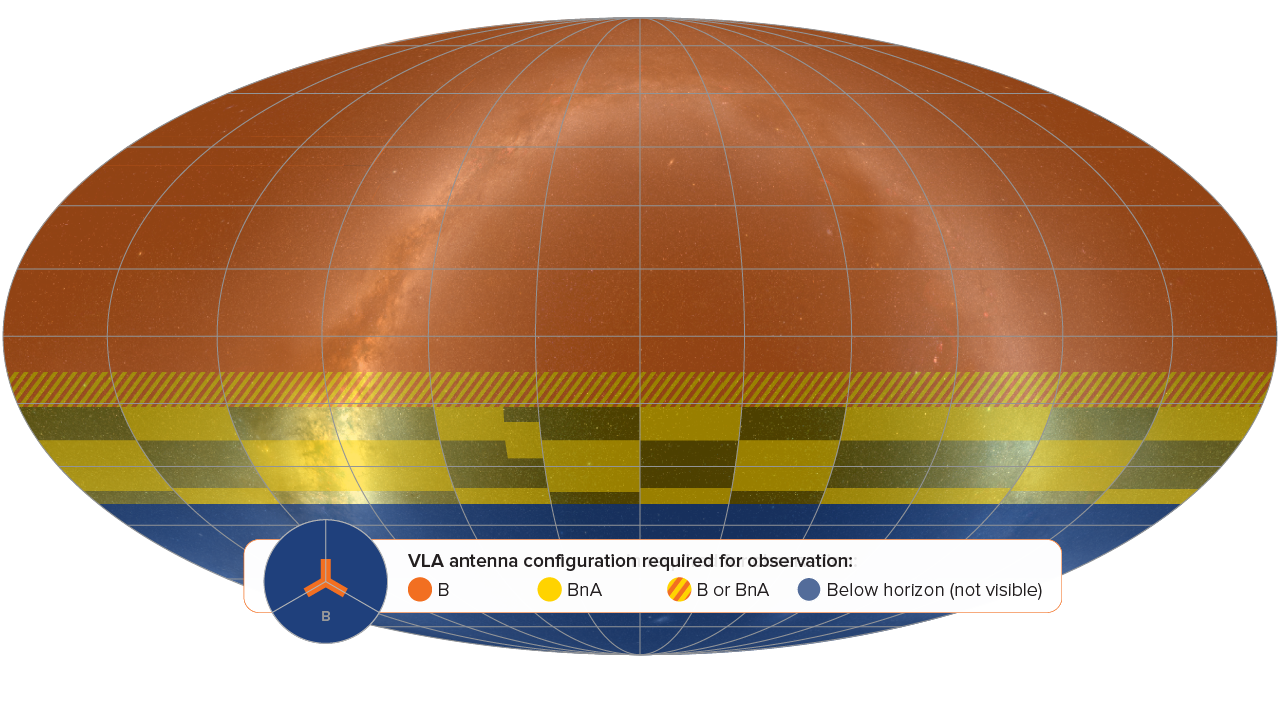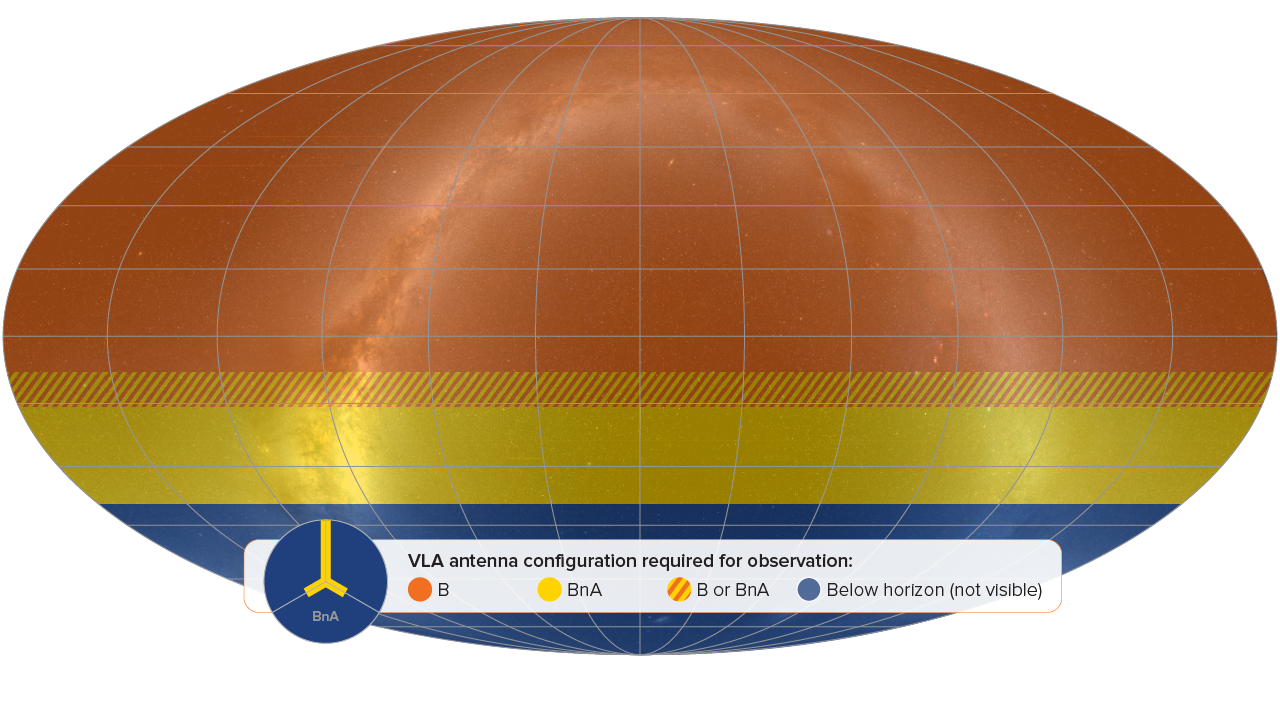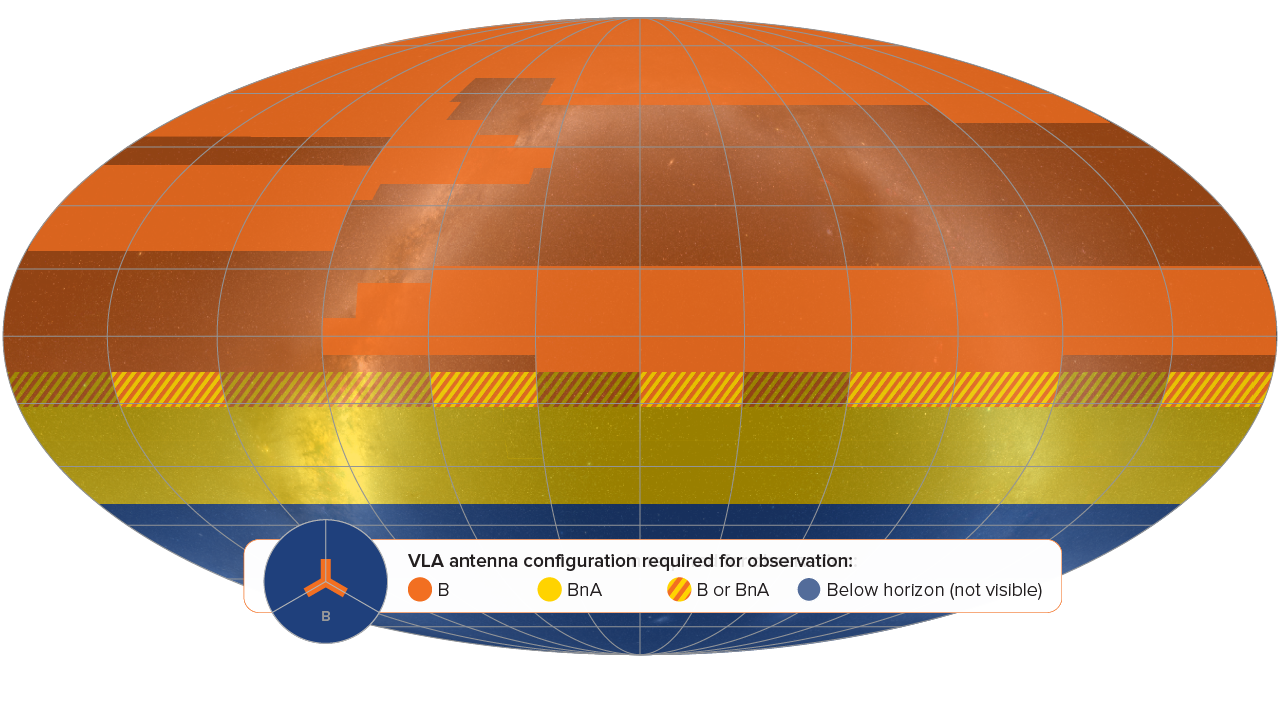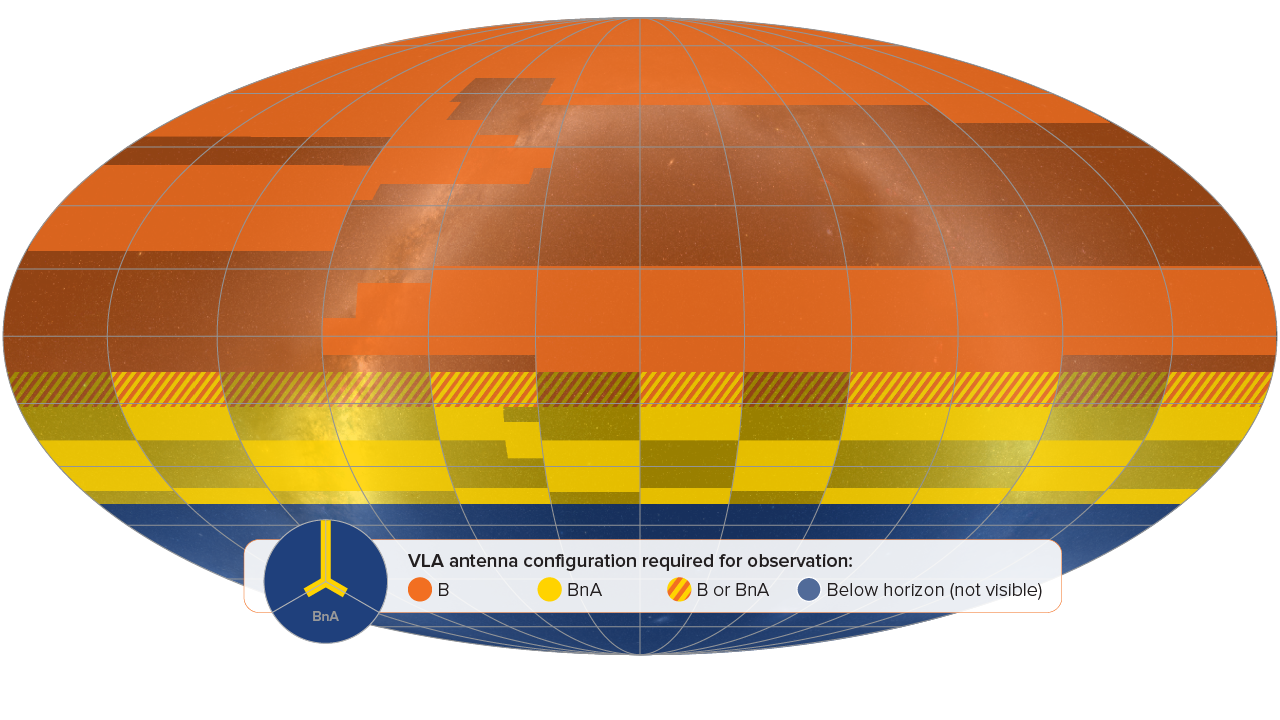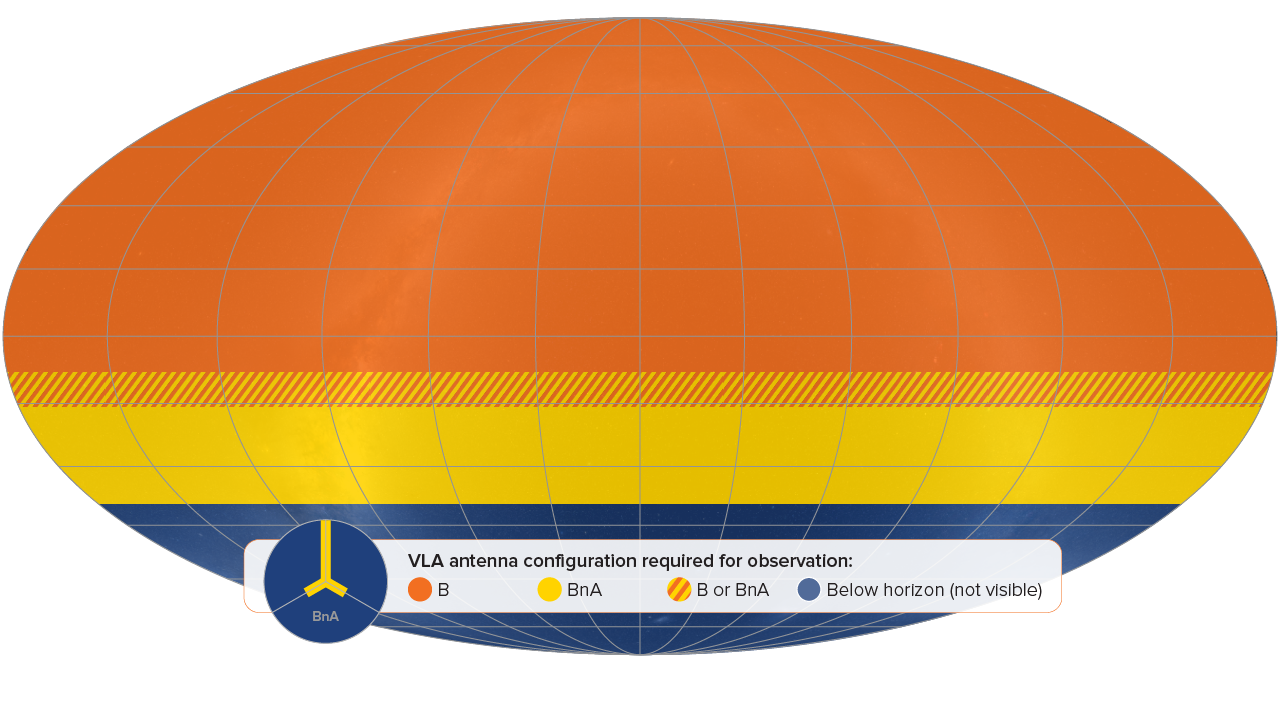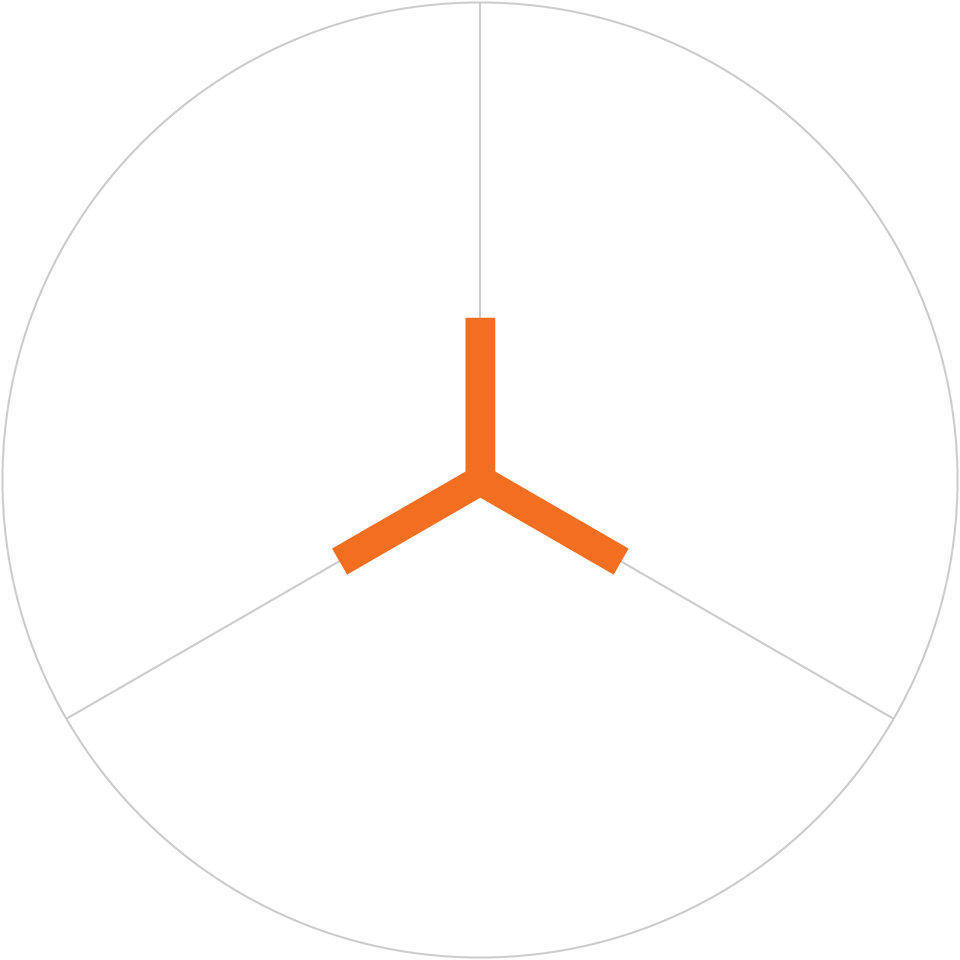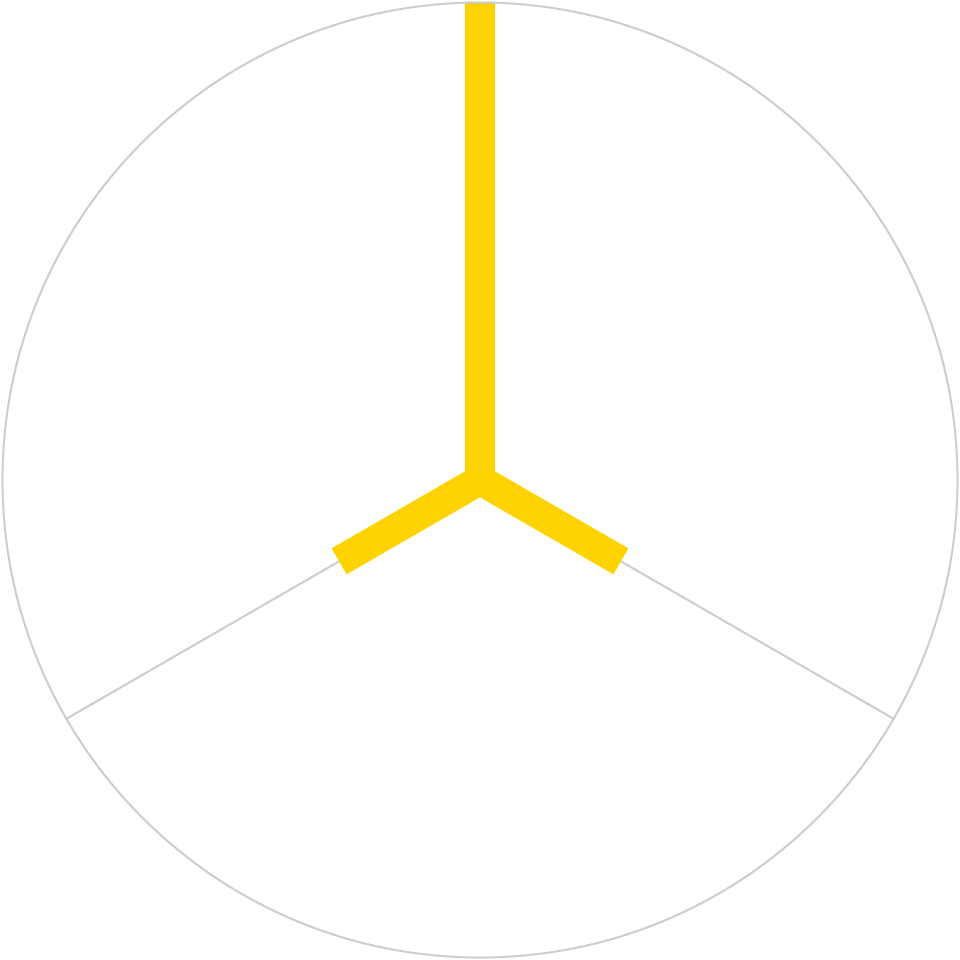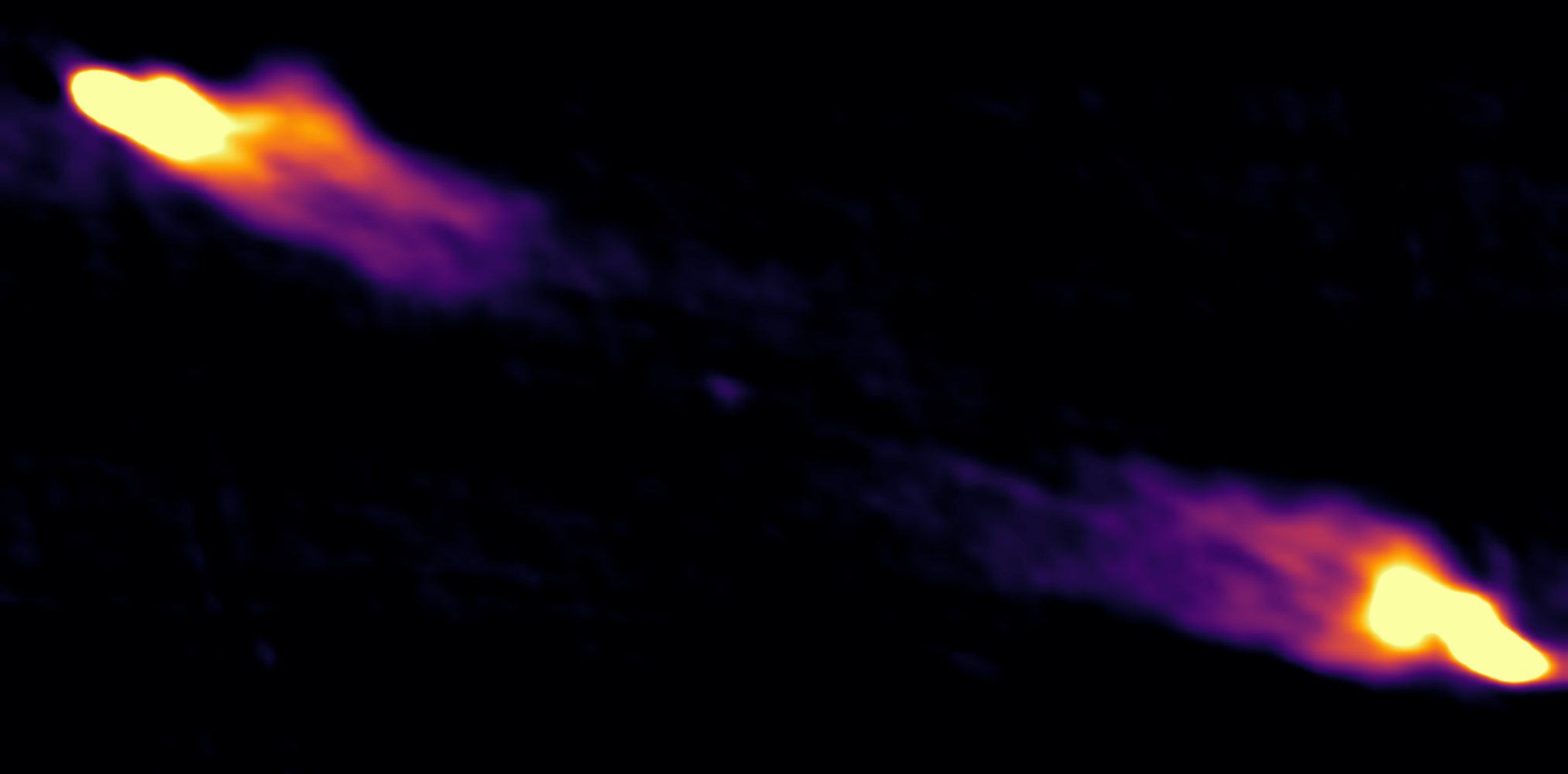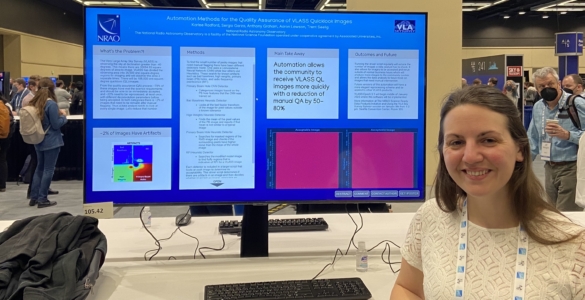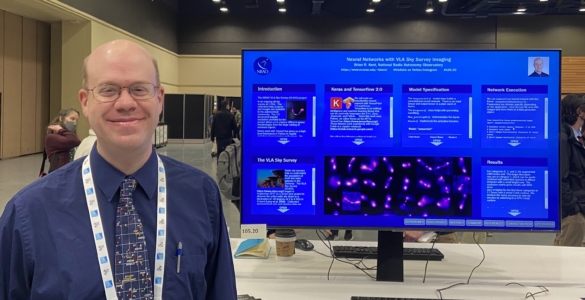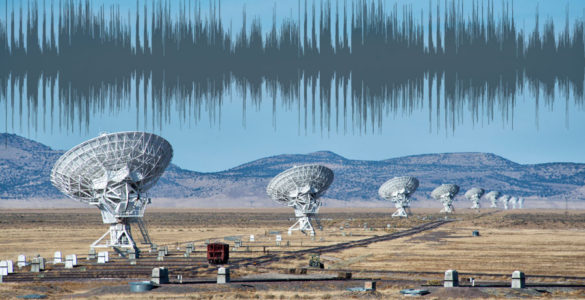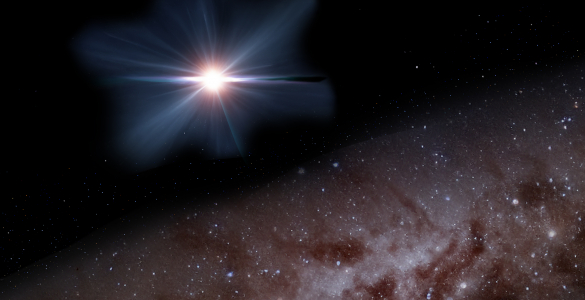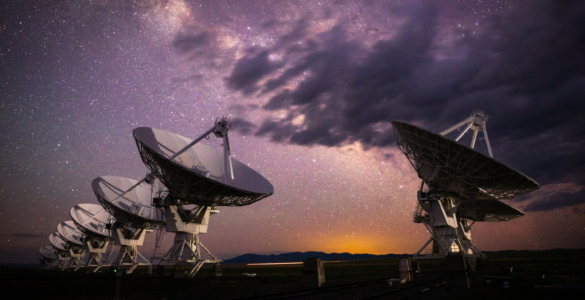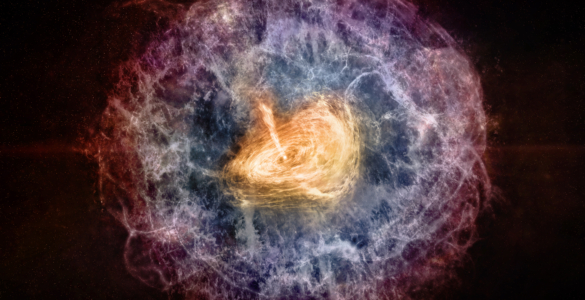Mapping the Radio Universe
Most of the marvels of the universe are invisible to us without technological assistance. Visible light is only a small slice of the electromagnetic spectrum, which ranges from tiny, high-energy gamma rays to long radio waves. So, imagine if you could put on radio glasses to view a range of light that normally can only be seen with the most sophisticated telescopes. What would you see? You might be able to peer through dusty clouds and view the beginning stages of star formation or watch the intermittent lighthouse bursts from pulsars, if the neutron star happens to be pointing towards Earth at the proper angle. What would it be like to see an array of energetic particles dancing around the Sun’s corona?
On September 7, 2017, the Karl G. Jansky Very Large Array (VLA) pointed its antennas toward the northern sky and began one of the largest all-sky radio observations in 40 years. From its vantage point in New Mexico, the VLA Sky Survey (VLASS) will map 80 percent of the sky in three phases over seven years and is expected to catalog approximately 10 million radio sources. The survey will collect data from powerful, cosmic sources that will allow the scientific community to image supernova explosions, gamma-ray bursts, and the collisions of neutron stars that are obscured from visible-light telescopes by thick clouds of dust. The VLA’s ability to see through dust and clouds will make the survey an important tool in the discovery of new radio objects.






